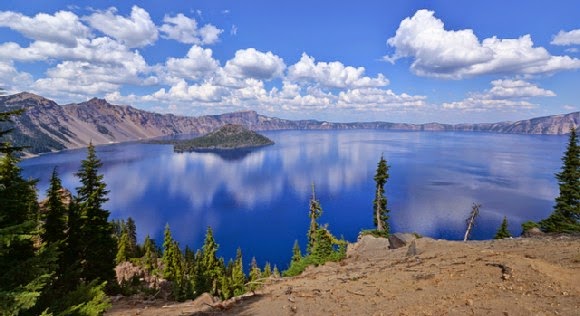Clean lakes are an important water resource for many reasons. They are a great attraction for tourists, a place where many activities such as fishing, swimming and sailing can be enjoyed, and a natural environment for wildlife. They can also be used as reservoirs.
Lake Annecy
Lake Annecy or Lac d’Annecy, as it is called in French, is the third largest lake in France and is located in the mountains of the Haute-Savoie region, of which Annecy is the capital. Lake Annecy is recognised as “Europe’s cleanest lake.”
Lake Annecy is a very popular with tourists who often take part in swimming diving, and other water sports.
Annecy is a wonderful place not just for sightseeing but for learning French and there is a French Language School established in the town.
2. Blue Lake (Tasman)
Blue Lake is the name given to a small lake in the Nelson Lakes National Park, which is part of the Southern Alps of New Zealand. Also known as Rotomairewhenua, it is the clearest freshwater lake in the whole world and is sacred to the Maori people. Swimming and diving are not allowed and use of this lake is strictly controlled.
It is drained by the western branch of the Sabine River and is usually reached from the Travers-Sabine Circuit.
3. Lake McKenzie
Lake McKenzie is also known as Boorangoora and is located on Fraser Island in Queensland, Australia. Its sands are white and composed of silica and the water is so pure that many freshwater species cannot live in it.
Many people visit Lake McKenzie to sunbathe on its shores and enjoy its unique beauty. Camping and picnic areas are provided as well as public toilets.
4. Crater Lake
Crater Lake in Oregon is the deepest lake in North America. It is actually a caldera lake and was formed some 7,700 years ago by the collapse of the volcano that is known today as Mount Mazama.
With no rivers going in or out of the lake, it is only filled by rain and melted snow and there is little to cause water pollution. Because of this Crater Lake has become world famous for its exceptional clarity and deep blue colour.
Crater Lake is also famous for a full-sized tree that, preserved by the coldness of the water, has been bobbing about in the waters of the lake for over a century and has now worn down to a very large stump and has affectionately become known as the “Old Man of the Lake.”
5. Arnensee
The Arnensee is a lake in the Berne area of Switzerland, and is also known as Lake Arnen. The Arnensee is used as a reservoir, but referring to the lake’s great beauty and location in the municipality of Gsteig in the Swiss mountains, it has been called the “Pearl of Saanenland.”







No comments:
Post a Comment